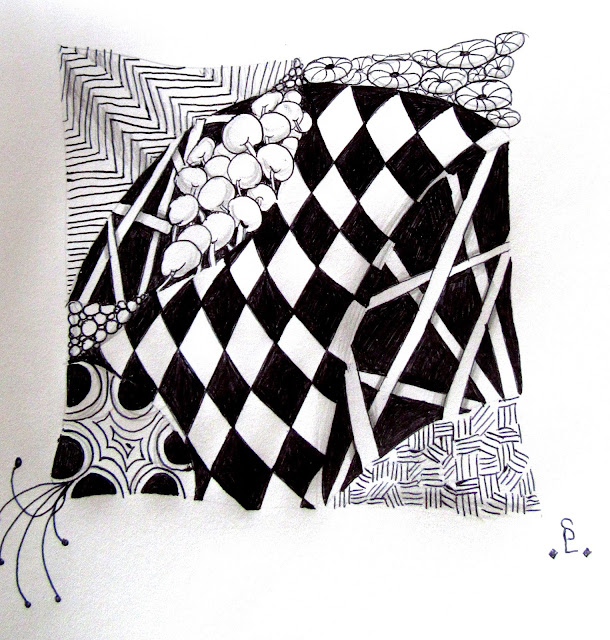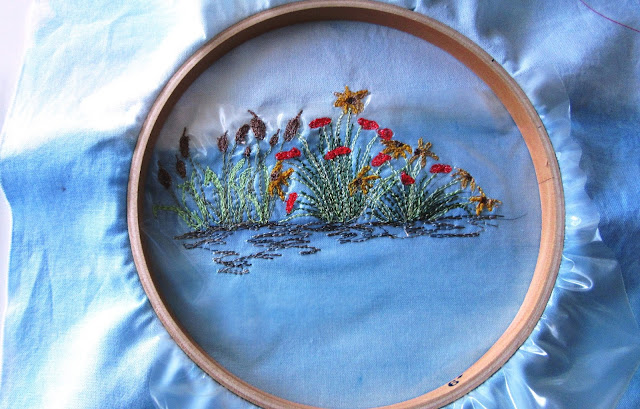The first time I heard the word "Zentangle", I was curious and wanted to find out more. For my birthday this year, I asked for this book, which my DS so kindly gave me. It is a 6 week course in this intriguing technique. So far I'm on Day 3 which is going very well. This is not only relaxing and creative, but helps me to open my mind to the art and to keeping a daily art journal as I did years ago (almost 20, to be exact) when I attended City and Guilds-Patchwork and Quilting. The tile I created today looks like a cushion to me.
 |
Day 3
|
Honestly, I think anyone can do this method even though it looks complicated. The book takes it one day at a time and briefly describes the principles of art like shading which can give depth and dimension. Elaborating on some of the designs can lead to some awesome ideas for patterns and quilting. The basic concept is to fill every space of the tile with designs using marks, lines, shading, shapes, etc...
 |
Day 1
|
 |
Day 2
|
Each day is a new addition to the marks and you make a new tile everyday, but I have not looked ahead to the next day as I don't want to have a preconception of what is to come, or psyching myself out by thinking "I can't possibly do that", and ultimately giving up. You can, however, look back on the designs learned from past days to add to the current day's tile. It's actually encouraged, and I can see that it adds so much to the finished tile.
Being a quilter and seeing repetitive patterns over and over can be boring. I find whole cloth quilts beautiful in their own right, but again, not my type. Color, texture, and quilting stitches can break up the monotony, but it doesn't change the repetitiveness. Sometimes I finish a quilt and am disappointed by it for this reason. This is why I don't like following a pattern verbatim. Or I will put a spin on the design or do free hand quilting in my own designs. The Zentangle method can work on quilt patterns and stitching to fill spaces and bring interest. I want to test this out on a negative space quilt I have waiting for design inspiration, so this must be what I'm waiting for. Using the thread in the machine, I will "draw" out my Zentangles to fill the spaces.
For now, it's break time for my brain and I need to get dinner on. I will get back to this in the coming days.













.jpg)


.jpg)